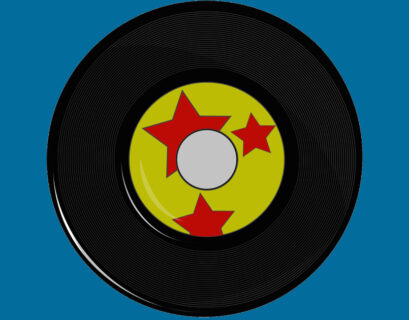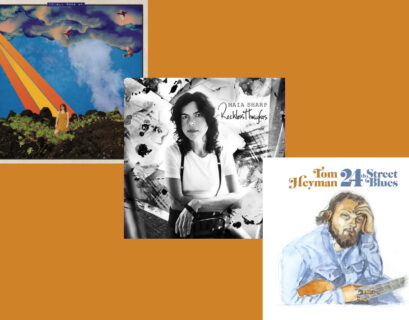It’s the time of year for saving money!
I suppose, technically, streaming might be traced back as far as 1999 when the service Napster first arrived as a peer-to-peer service. History recalls Napster almost immediately being consumed in legal troubles over copyright infringement. Shortly after their inception, they were forced to suspend their services and were ultimately acquired by Rhapsody – although the service is now called Napster. Streaming hardly stopped there, however.
It might be at least partially true that young kids with earbuds helped make streaming what it is today. With services like Pandora and Spotify, services who grew exponentially at the hands of mostly younger-ish, non-audiophile listeners, streaming became firmly entrenched as a means to listen to a song.
Audiophiles, however, in the early days remained circumspect. We still used physical media. Then came Tidal.
Now, suddenly, we had a way to stream a CD quality song from the Internet. We marveled at the availability of, what, an entire world of music right at our fingertips. Perhaps best of all, we could enjoy all this music each month for the cost of a standard CD purchased at a music store. As Tidal gained popularity, audiophiles signed on in droves. Suffice it to say today, streaming is the predominate method audiophiles employ for digital music.
Tidal, for a while anyway, was about the only choice. While CD quality, presumably at a bitrate of 1411 kbps and the familiar 44.1 / 16, was initially offered, Tidal soon enough teamed up with the highly controversial format called MQA.
Not long after Tidal and MQA partnered, the audiophile world suddenly heard about a new game, one from France called Qobuz. For US based audiophiles, we heard how marvelous this new European service was and our big question was simple – when would it find its way to the US?
From day one, the very instant Qobuz hit US shores, it made an impact in the choices audiophiles made for streaming services. And here is where it gets really fun, Qobuz has actual high-resolution music, all the way up to 192 / 24 or 9216 kbps. And Tidal? Remember MQA? Audiophiles suddenly had two platforms about which they could disagree.
For my purposes, I signed on to Tidal at some point before the availability of Qobuz in the US. Here’s the rub, however – I am not especially a fan of streaming. I prefer a physical CD copied to my server. Why? Simple. On my system it sounds better than streaming. Noticeably better. Dramatically better. And to a point, I like owning my music. For whatever that’s worth these days.
I was very content to continue to buy CDs, copy and enjoy them. I used Tidal for really one purpose, discovering new music I could then purchase. Peripherally, I could also play a song I did not have in my library if a visitor was in the audio room and made a specific request.
I started thinking about streaming recently because of something I usually don’t even notice – the cost of Tidal. I have seen the monthly $19.99 charge to my account for who knows how long. It is just something to which I typically pay very little attention. When the July charge showed up in my financial information, I became curious about what the other services offered and their associated fees. I decided to start looking at alternatives.
While I realize Amazon and now even Spotify offer higher than 320 kbps bitrates (Amazon even offers HD), I never really considered using either of them, or the other similar services. There’s also compatibility with my equipment issues. For my purposes, the decision was singular – Tidal or Qobuz?
For most listeners who plan to use streaming as their predominate way to play a song, having a variety of packages makes sense. Want to download music? Qobuz fully supports downloads. Tidal does as well but my sense is they are a little less convenient in the effort.
Considering cost, Qobuz has multiple packages where Tidal has two main offerings – less than CD quality and CD Quality. As previously mentioned, Qobuz offers hi-rez up to 192 / 24 and Tidal has MQA.
I’m not one to place a huge emphasis on two music plans that have, at their lowest common denominator, a difference of about $5.00 but that’s pretty much the bottom line. A monthly basic cost for Qobuz is $14.99 per month. That can be brought down to $12.49 if you pay yearly. Tidal is steadfastly $19.99 per month for CD quality. Qobuz offers other packages at higher yearly costs with increased features. Tidal has two plans however, they do have videos for those interested in a video aspect. Personally, I’m only concerned about music.
So far, I see both services as pretty much even. Here is where we reach the fork in the road – deciding on a format.
There are those who will champion MQA. They feel it is a superior format in every way, at least as compared to standard CD quality. I’m sorry but I’m not one of those believers. I have heard music played in MQA that sounded amazing. I’ve heard MQA sound okay, nothing to get really excited about. I’ve heard MQA sound positively dreadful.
I can also say the exact same thing about CD quality and high-resolution quality. Face it, some recordings sound better than others regardless of the format. I said the exact same thing in the 1970’s when I first started buying albums. My guess is recording quality will always be variable.
Because, however, I have always been leery of MQA, I decided full-fledged, if there is such a thing, high resolution recordings are a better mousetrap. So, the scales tip towards Qobuz. However, my DAC is not MQA capable so I’m not getting “Master Quality Authenticated” anyway. Theoretically, at best I’ll get 192 / 24 from Tidal but my guess is most often it will be at 96 / 24. Either way, still better than Red Book CD.
As it stands, I am still riding the fence. I have subscribed to Qobuz and like Tidal, more or less struggle with making the app work seamlessly. Chalk that up to inexperience. It is also fair to say that manifestly, this has only succeeded in me spending an extra $15.00 per month with a not as yet declarative outcome. Here again, that is not a concern to me.
What is a concern is sonic quality. While I find Tidal and Qobuz to be mostly equal in that regard (my opinion varies), here again, neither of them measures up to a CD copied to my server. Basically, I am right back where I started, just fifteen bucks a month poorer.




















There is another, better, more complete final solution, Use Roon…combine your streaming and home libraries…
Steven, I can always count on you to point out the obvious, even when I cannot see the forest for the trees!
Me figuring out how to do so, different story.
I agree with SS on this. Now that Qobuz is about $11 a month, Roon doubles my cost of streaming — not counting the cost of the NUC to run Roon Core — but I think it’s worth it. It provides many features, reliability, and an interface that is the same on every device in our home. In cataloging and searching classical music, it is barely satisfactory; for other genres, I find it really, really good. And the interface is 10× better and more logical than the native Qobuz one.
About sound quality: I get the same SQ streaming from Qobuz as I do streaming my local files, which is the same as or better than playing a physical disc locally. So Paul — time to optimize your streaming setup! (Or am I leaving SQ on the table by not using special programs with upsampling, etc.?)
Paul, if you use a computer, try this: make sure to use wasapi exclusive out (I assume you already do), and then in Qobuz IMPORT the album of your choice to your C: drive. Then restart the computer without a network connection and play the album from your offline library in Qobuz. The difference is like the one between a regular vinyl pressing and an audiophile pressing. The combination of having the tracks offline and network turned off creates an easily heard improvement that makes Qobuz and ripped tracks being played equal. Looking forward to what you think about this easily performed experiment.
Hey Stefan,
Many thanks for the suggestion. My server, the Memory Player 64 is highly specialized and has six custom software programs all designed to reduce jitter and enhance playback. Two of these programs are even patented. Part of the reason a CD copied to my server sounds so good is because of what the Memory Player is doing. While technically a computer, having it function like a regular computer is not so simple. In fact, just to make Roon work, certain settings must be set and “things” done so Roon will access the music drives. All in all, the sonic difference between streaming and what the MP is doing is in no way subtle. It is quite noticeable in fact. Anyway, thanks for your comment!
Paul
Better yet, Roon on top of Qobuz.
Roon ‘sees’ all your digital music and integrates everything into a seamless view, has a wonderful user interface, has the best ‘recommendations’ algorithms, and you can tweak your SQ. They are converting more and more albums to 192/24 which sounds as good as MQA to me.
If you observe enough discussions of streaming services (especially whenever MQA is mentioned) you’ll notice we audiophiles seem to lack an ability to stay on topic. Nearly 100% of the time the discussion veers into how some non-streaming source is the superior choice. This article is no different.
IMO the choice of what streaming service is preferred has nearly nothing to do with sound quality. Instead the issue is largely what interface is preferred; and what one generates the best playlists.
Having someone discuss Tidal who doesn’t use a DAC with full MQA decoding/rendering capabilities seems odd.
I moved into streaming (previously was just relying on youtube when I got curious about something) towards the end of last year. Ended up with Amazon HD (after trying Qobuz, and not trying Tidal). And the price has dropped since I subscribed for a year, so even cheaper next year.
Quite a lot there, the resolution typically matches the highest quality downloads available from elsewhere (up to 24 bit / 192 kHz), so I can check out stuff if I run across something that sounds like it might be interesting, often as not something I would not bother with otherwise and probably would never listen to again.
Sometimes I’ll still pick up a cd based on what I listen to (typically having to resort to ebay or discogs for the out of print ones, ouch), but now I am a bit more inclined to either just listen to the stream or download high res from somewhere (else – I haven’t bothered to figure out yet if downloading from amazon gives you the high res version), when I want to own something, as it usually does sound better that way. But even with the high res downloads and the best sound quality, I miss having it on on a shiny plastic disc, leaves a little hole in my psyche I guess.